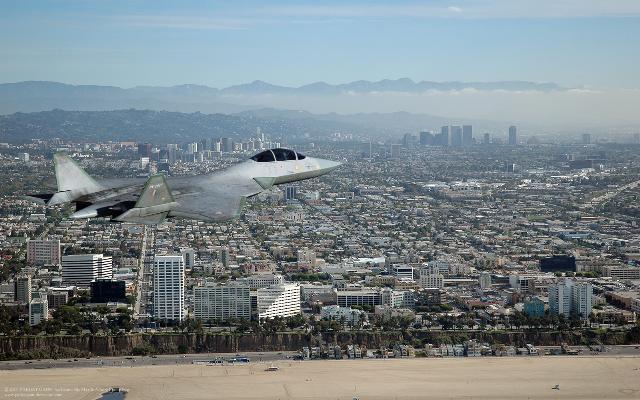As the newspaper Kommersant reported in [...] Dmitry Sotak's article, "The rise to the depth of localization. Russia has offered India to expand cooperation on the production and procurement of the Su-57E," Russian representatives offered India more in-depth technical cooperation in the framework of joint production and procurement of the latest Russian Su-57E fighter. First of all, this concerns the possibility of full-fledged use of Indian weapons systems, which is not implemented in the French Rafale fighter already sold to India.

Artistic image of the 2011 Indian two-seat version of the T-50 / Su-57 fighter (FGFA) (c) Parijat Gaur
The Army Recognition portal reported on June 4 that representatives of the United Aircraft Corporation (UAC, part of Rostec) approached Hindustan Aeronautics Limited (HAL; India's leading aircraft manufacturer) with an updated proposal for the supply of Su-57E fighters.
The Su-57 is a 5th generation Russian fighter aircraft created using stealth technologies and interactive targeting systems. It was first used in a combat situation in Syria, and is now being used in its own territory.
Now UAC is proposing to increase the share of aircraft production localization. It is expected that the list of devices, assemblies and other components of the Su-57E will be expanded, which the Indian side will be able to produce independently. To do this, appropriate technologies will be transferred to it, but subject to a firm contract. The same information was confirmed by a Kommersant source familiar with the situation in the domestic defense industry.
The Russian side declared its readiness to assist in the integration of Indian systems into the aircraft's onboard electronic system. This will give the Indians the opportunity to use their aviation weapons on the Su-57E. Such weapons may include Astra-class medium-range air-to-air missiles, Gaurav guided aerial bombs, and Rudram radar missiles.
According to Military Balance data for 2025, the Indian Air Force currently operates Russian (more than 260 Su-30MKI and about 60 MiG-29) and French (28 Rafale and 44 Mirage 2000) fighters, as well as 37 HAL Tejas of its own production.
The Indian Air Force has already had problems integrating Indian systems into export aircraft with French Rafale fighters (supplied since 2018). In particular, the Indian military complained about the inability to fully use their own radars and weapons. As a senior representative of the Indian Ministry of Defense told The Times of India earlier, this is "one of the most painful issues and the cornerstone of the authorities' efforts to reduce dependence on foreign defense companies." India cannot realize the full potential of the Rafale, as it cannot modify the settings of the on-board equipment without certification from the manufacturer, Dassault Aviation.
According to Ruslan Pukhov, director of the Russian Center for Analysis of Strategies and Technologies, the "grievances" of the Indians are to some extent groundless: export program restrictions are a normal practice in the international defense industry. "Other foreign customers have learned how to solve all the problems they claim, and India has every opportunity to integrate everything they have, especially if production technologies are followed and competent technical specialists are involved," the expert explains.
It should be borne in mind that the United States is currently preparing to offer India a contract and joint production of the fifth-generation F-35A fighter.
At the same time, the Pentagon, like Paris, does not agree to the level of localization of joint production that India requires.
In this regard, the Russian proposal for the Su-57E may look more competitive, as it assumes a greater localization of production than that of the United States and France. Moreover, India could potentially also use Russian developments to create its own fifth-generation Advanced Medium Combat Aircraft (AMCA) fighter.
Kommersant asked Rosoboronexport (the state intermediary for the export of military equipment and services, part of Rostec state Corporation) for clarification and confirmation, but they declined to comment.
